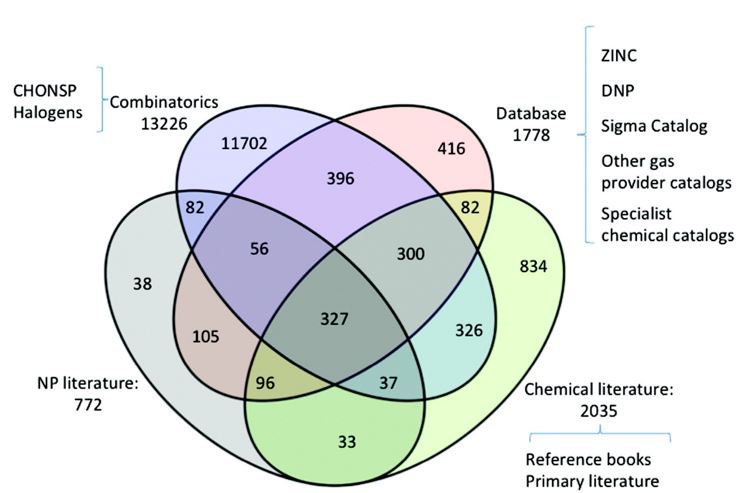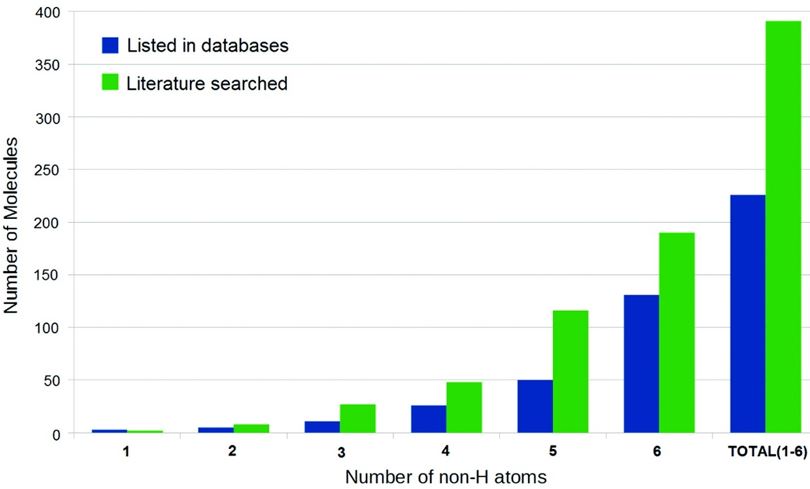Scientists have listed the molecules that are present in gases which they believe would be found on other planets with life as we know it. This forms part of a new approach aimed at maximizing the chances of finding exoplanets orbiting nearby stars that support life.
Telescopes could remotely detect biosignature gases emitted by exoplanetary life forms. An exoplanet is a planet outside our Solar Systems (they are often referred to as simply ‘planets’).
Biosignature gases may be different elsewhere
Scientists from MIT in the USA and the Rufus Scientific Ltd. in England explained in the journal Astrobiology (citation below) that these gases could well have very different compositions in other planets from those in our atmosphere.
 Illustration of the functional approach to creating the list for all small, stable, volatile compounds, for molecules with N ≤ 6 non-H atoms. (Image: Astrobiology)
Illustration of the functional approach to creating the list for all small, stable, volatile compounds, for molecules with N ≤ 6 non-H atoms. (Image: Astrobiology)
MIT’s department of Earth, Atmospheric and Planetary Sciences wrote on its website:
“Although a few biosignature gases are prominent in Earth’s atmospheric spectrum (familiar among them O2, CH4, N2O), life on Earth is known to produce thousands of different molecules and scientists theorize that some may be able to accumulate at similar or higher levels on exo-Earths (e.g., dimethyl sulfide and CH3Cl) depending on the exo-Earth ecology and surface and atmospheric chemistry.”
The authors propose that all stable and potential volatile molecules should be considered as possible biosignature gases.
They say they have laid the groundwork for detecting such gases by carrying out a massive search for molecules with six or fewer non-hydrogen atoms.
S. Seager, J.J. Petkowski and W. Bains from MIT and Rufus Scientific Ltd. believe this exhaustive list of small molecules may help improve our understanding of the limits of the biochemistry of Earth.
 Comparison of molecules produced by life forms as found in published databases and found by a manual literature search. For CNOPSH compounds (C – carbon, N – nitrogen, O – oxygen, P – phosphorus, S – sulfur, and H – hydrogen) only. (Image: Astrobiology)
Comparison of molecules produced by life forms as found in published databases and found by a manual literature search. For CNOPSH compounds (C – carbon, N – nitrogen, O – oxygen, P – phosphorus, S – sulfur, and H – hydrogen) only. (Image: Astrobiology)
Nancy Y. Kiang, PhD, Senior Editor of Astrobiology and a scientist at NASA’s Goddard Institute for Space Studies, said regarding this work:
“This work reminds me of Darwin’s voyage aboard The Beagle, exploring the vast diversity of life by sailing around the world. In the search for life beyond our planet, we are currently at a similarly exciting, early but rapidly evolving stage of exploration as the discovery of exoplanets accelerates.”
“Instead of netting strange creatures from the bottom of the sea, the authors here have searched and found thousands of curious, potentially biogenic gas molecules. These will inspire a new body of research into identifying also larger molecules, investigating their origin and fate here, and their potential expression on exoplanets as signs of life.”
In an Abstract in the journal, the authors wrote:
“The list can be used to study classes of chemicals that might be potential biosignature gases, considering their accumulation and possible false positives on exoplanets with atmospheres and surface environments different from Earth’s.”
“The list can also be used for terrestrial biochemistry applications, some examples of which are provided. We provide an online community usage database to serve as a registry for volatile molecules including biogenic compounds.”
Citation: “Toward a List of Molecules as Potential Biosignature Gases for the Search for Life on Exoplanets and Applications to Terrestrial Biochemistry,” Seager S., Bains W., and Petkowski J.J. Astrobiology. April 2016, ahead of print. DOI:10.1089/ast.2015.1404.
